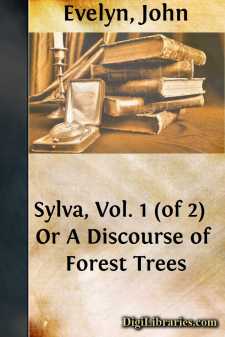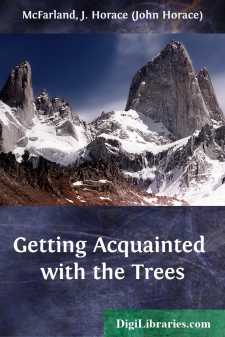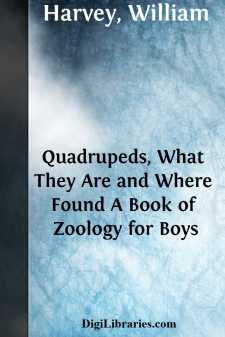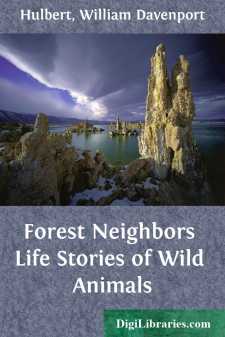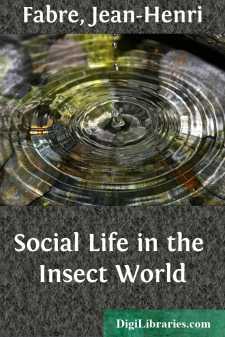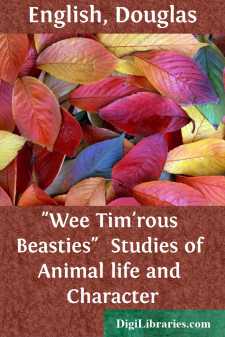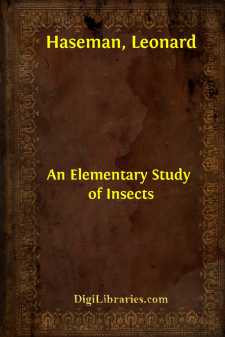Nature
Nature Books
Sort by:
by:
John Evelyn
INTRODUCTION. I Evelyn & his literary contemporaries Isaac Walton & Samuel Pepys. Among the prose writers of the second half of the seventeenth century John Evelyn holds a very distinguished position. The age of the Restoration and the Revolution is indeed rich in many names that have won for themselves an enduring place in the history of English literature. South, Tillotson, and Barrow among...
more...
A Story of Some Maples This is not a botanical disquisition; it is not a complete account of all the members of the important tree family of maples. I am not a botanist, nor a true scientific observer, but only a plain tree-lover, and I have been watching some trees bloom and bud and grow and fruit for a few years, using a camera now and then to record what I see—and much more than I see, usually! In...
more...
by:
William Harvey
Preface. I have been called upon to write illustrative sketches to a series of engravings, designed by an eminent artist. In performing my part of the work I have thrown the Mammalia into twenty-four groups—corresponding more or less to the picture designs—and have dwelt chiefly on the geographical distribution of the animals. The Cetaceae and Vespertilionidae are properly omitted. In the groups...
more...
Introduction.—The occasion for publishing this catalogue of Philippine earthquakes which were of violent and destructive character has been furnished by a request from Prof. John Milne for a list of such phenomena, to be included in the General Earthquake Catalogue which this eminent seismologist is preparing under the auspices of the British Association for the Advancement of Science. The said...
more...
INTRODUCTION Somethirty years ago, while out on one of his landlooking trips in the woods of Northern Michigan, my father came upon a little lake which seemed to him the loveliest that he had ever seen, though he had visited many in the course of his explorations. The wild ponds are very apt to be shallow and muddy, with low, marshy shores; but this one was deep and clear, and its high banks were...
more...
by:
Jean-Henri Fabre
CHAPTER I THE FABLE OF THE CIGALE AND THE ANT Fame is the daughter of Legend. In the world of creatures, as in the world of men, the story precedes and outlives history. There are many instances of the fact that if an insect attract our attention for this reason or that, it is given a place in those legends of the people whose last care is truth. For example, who is there that does not, at least by...
more...
by:
William McCombie
I. THE FEEDING OF CATTLE, Etc. (Read before the Chamber of Agriculture.) As my friend Mr Stevenson and some other members of the Chamber of Agriculture have expressed a desire that I should read a paper on my experience as a feeder of cattle, I have, with some hesitation, put together a few notes of my experience. I trust the Chamber will overlook the somewhat egotistical form into which I have been...
more...
LOBO THE KING OF CURRUMPAW Currumpaw is a vast cattle range in northern New Mexico. It is a land of rich pastures and teeming flocks and herds, a land of rolling mesas and precious running waters that at length unite in the Currumpaw River, from which the whole region is named. And the king whose despotic power was felt over its entire extent was an old gray wolf. Old Lobo, or the king, as the Mexicans...
more...
by:
Douglas English
MUS RIDICULUS Mus ridiculus! The taunt had been flung at him by a stout field-vole, and, by reason of its novelty as well as of its intrinsic impertinence, had sunk deep into his memory. He had felt at the time that “Wee sleekit, cowrin’, tim’rous beastie” was but a poor rejoinder. But he knew no Latin and chose what was next in obscurity. Besides, he was a young mouse then, and breathless with...
more...
by:
Leonard Haseman
INTRODUCTION In the preparation of a book of this nature, to be used in the grade schools, we realize that the one fundamental thing to keep in mind is the economic importance of the insect, be it good or bad. The child wants to know what is good and what is bad and how he can make use of the good and how he can get rid of the bad. And yet there is something more associated with the life, work and...
more...


